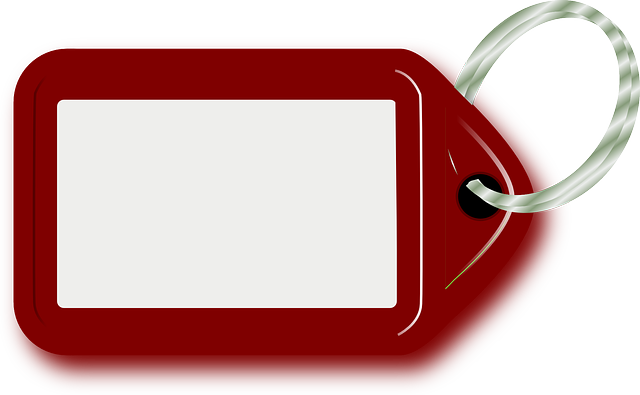London Skin Tag Removal services are specialized treatments offered by trained professionals for the safe and effective removal of skin tags, a common benign skin growth. These growths, known as acrochorda, typically form in areas with frequent friction like underarms, groin folds, around the eyes, neck, and face. In London, where tight clothing and skin contact are common due to the city's lively lifestyle, the incidence of skin tags is notable. Dermatologists in London provide treatments such as cautery, ligation, or cryotherapy to address this issue, prioritizing minimal scarring and discomfort. The removal process begins with a thorough consultation and is conducted under local anaesthesia in clinical or hospital settings. After the procedure, patients receive post-operative care instructions to maintain cleanliness and dryness at the removal site, manage any discomfort, and prevent infection. A dressing is applied, and over-the-counter pain relief can be used for comfort. Patients are advised to refrain from tight clothing or jewelry near the surgical site and to avoid strenuous exercise until fully healed, typically within one to two weeks. Regular follow-up appointments are essential for monitoring the healing process and addressing any post-procedure concerns. With proper aftercare and adherence to follow-up instructions, patients can enjoy clear skin with minimal downtime, thanks to London's expert skin tag removal services.
Skin tags, those pesky benign skin growths, are a common occurrence for many individuals. When these small pieces of flesh become bothersome or present health concerns, surgical removal emerges as a safe and effective solution. This article delves into the intricacies of skin tag removal in London, offering insightful guidance through each step. From understanding the nature of skin tags to what one can expect from the surgical procedure itself, we explore ‘London Skin Tag Removal’ with a focus on clinical precision and patient care. Additionally, we provide essential aftercare tips to ensure a swift and healthy recovery, making this an indispensable read for anyone considering this procedure in the bustling metropolis of London.
- Understanding Skin Tags: A Comprehensive Guide to Their Nature and Occurrence
- The Process of Surgical Skin Tag Removal in London: What to Expect from Start to Finish
- Aftercare and Recovery: Ensuring a Smooth Healing Process Post-Skin Tag Surgery in London
Understanding Skin Tags: A Comprehensive Guide to Their Nature and Occurrence

Skin tags, also known as acrochorda, are small benign growths that resemble a piece of hanging skin or a pedunculated soft fibroma. They commonly occur in locations where there is constant friction or rubbing, such as the underarms, groin folds, around the eyes, on the neck or face, and in areas where skin may be folded. While they are generally considered harmless and painless, their appearance can vary from person to person, ranging from a few millimeters up to five centimeters in size. Understanding the nature of skin tags is crucial for individuals who may be self-conscious about them or experience discomfort during activities.
In London, where the climate often leads to tight clothing and the hustle of daily life can result in skin-to-skin contact, the prevalence of skin tags is not uncommon. The city’s diverse population also means that a range of skin types and conditions are treated by dermatologists specializing in skin tag removal. The procedure for removing skin tags in London Skin Tag Removal clinics is typically done through cautery, ligation, or cryotherapy, ensuring minimal scarring and discomfort. These methods are highly effective and are performed by trained professionals, providing a safe and efficient solution to manage the appearance and any potential complications of skin tags.
The Process of Surgical Skin Tag Removal in London: What to Expect from Start to Finish

When considering surgical skin tag removal in London, it is a straightforward procedure typically performed under local anaesthesia in a clinic or hospital setting. The process begins with a thorough consultation where a dermatologist or qualified healthcare provider will assess your condition and discuss the best approach for removal. This is an opportunity to address any concerns and ask questions about what to expect during and after the procedure.
The actual removal involves carefully cutting the skin tag with sterile instruments, ensuring that the base of the tag is removed to prevent regrowth. The procedure is precise, minimising the risk of scarring while effectively eliminating the skin tag. Post-operative care is crucial for optimal healing and includes keeping the area clean and dry, as well as following any additional instructions provided by your healthcare provider. Aftercare may also involve monitoring for signs of infection and, in some cases, the application of dressings or topical treatments. Throughout the process, the focus remains on delivering safe and effective skin tag removal with a high degree of patient satisfaction, a testament to the skill and expertise of London’s medical professionals.
Aftercare and Recovery: Ensuring a Smooth Healing Process Post-Skin Tag Surgery in London

Following the surgical removal of skin tags in London, a meticulous aftercare routine and careful recovery process are paramount for achieving a smooth healing journey. Patients should be prepared to adhere to post-operative instructions provided by their healthcare professional to ensure optimal outcomes. Immediately after the procedure, it is common to experience some discomfort or slight bleeding; however, this typically subsides within a short period. A bandage or dressing will likely be applied to the removal site to protect the area and minimize infection risk.
In the initial days post-surgery, keeping the treated area clean and dry is crucial. Regularly cleaning the area with gentle soap and warm water, followed by patting it dry, can help maintain a sterile environment that fosters healing. Over-the-counter pain relief medications may be recommended to manage any discomfort. Additionally, avoiding tight clothing or jewelry around the surgical site prevents irritation and promotes better circulation, which is beneficial for healing. Most patients can return to their normal activities within a few days, but strenuous exercise should be avoided until the area has fully healed, typically within one to two weeks.
London skin tag removal clinics often provide detailed aftercare guidelines tailored to each patient’s needs. These guidelines ensure that individuals receive personalized care and can expedite the recovery process. It is also important for patients to attend any follow-up appointments scheduled to monitor the healing progress and address any concerns. By following these aftercare protocols, patients in London can significantly reduce the risk of complications and enjoy the benefits of having their skin tags removed with minimal downtime.
London skin tag removal offers a straightforward solution for individuals seeking to address these benign growths. The procedure, conducted by qualified medical professionals, ensures the safe and efficient excision of skin tags, providing patients with both aesthetic and comfort benefits. Post-operative care, tailored to each patient’s needs, facilitates a swift and uncomplicated recovery, ensuring minimal disruption to daily life. For those considering this procedure, it is advisable to consult with experienced practitioners in London, where the combination of skilled clinicians and advanced techniques delivers high-quality care. With the right approach to surgical removal and aftercare, individuals can confidently enjoy clearer, smoother skin without the inconvenience of skin tags.
